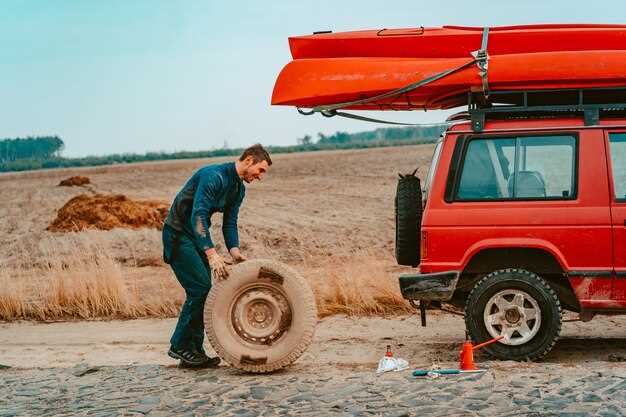
Installing a winch on your truck can significantly enhance its off-road capabilities, providing you with the power to pull heavy loads, recover vehicles, and navigate challenging terrains with confidence. This guide will walk you through the essential steps and considerations for a successful winch installation, ensuring that you are well-prepared for your next adventure.
Before you begin the installation process, it is important to select the right winch for your truck. Consider the winch’s weight capacity, type (electric or hydraulic), and the mounting options that best suit your vehicle. A winch’s pulling capacity should at least be 1.5 times the weight of your truck to ensure efficient operation under load.
In the following sections, we will cover the necessary tools and materials, step-by-step installation procedures, and safety protocols to follow during the installation process. By carefully following this guide, you can equip your truck with a reliable winch that meets your needs and enhances your off-road experience.
Choosing the Right Winch for Your Truck’s Specifications

Selecting the right winch for your truck involves understanding various specifications that match your truck’s capabilities and your needs. Here are the key factors to consider:
-
Weight Capacity:
Determine the pulling capacity required for your needs. A general rule of thumb is to choose a winch with a capacity at least 1.5 times the weight of your truck. For example, if your truck weighs 5,000 lbs, aim for a winch rated for at least 7,500 lbs.
-
Type of Winch:
There are two primary types: electric and hydraulic. Electric winches are easier to install and operate, while hydraulic winches provide more power and are better suited for frequent heavy-duty usage.
-
Mounting Options:
Ensure the winch can be mounted properly on your truck. Check compatibility with your truck’s front or rear bumper, and select a winch that fits your mounting system.
-
Power Source:
For electric winches, consider your truck’s battery capacity. If you frequently use a winch, you may need a supplemental battery or a high-output alternator to keep up with power demands.
-
Rope Type:
Choose between steel cable and synthetic rope. Steel cables are durable and resistant to abrasion but can be heavy. Synthetic ropes are lighter, easier to handle, and safer, as they don’t store energy like steel cables, reducing the risk of snap-back injuries.
-
Gear Ratio:
The gear ratio affects the speed and power of the winch. A low gear ratio provides better pulling power but slower speed, while a higher gear ratio allows for faster retrieval but with less pulling strength.
-
Controls:
Examine the control options available. Manual, corded, and wireless remotes each have their advantages, with wireless remotes offering flexibility and ease of use from a distance.
-
Brand Reputation:
Research brands known for reliability and customer support. High-quality winches will often have warranties and customer reviews that can aid your decision.
By considering these factors, you can select a winch that meets your truck’s specifications and enhances your off-road capabilities.
Step-by-Step Installation Process for Your Winch

Installing a winch on your truck can enhance its off-road capabilities and provide a valuable tool for emergencies. Follow these detailed steps to ensure a successful installation.
Step 1: Gather Necessary Tools and Materials
Before starting, collect all required tools and materials, including the winch, mounting plate, wiring kit, basic hand tools (wrenches, sockets, screwdrivers), and safety gear (gloves, goggles).
Step 2: Select Mounting Location
Choose a suitable location on your truck’s front or rear bumper for winch installation. Ensure that it provides adequate space for the winch’s size and allows for proper access to controls.
Step 3: Prepare the Mounting Plate
If your winch requires a mounting plate, attach it to your truck’s designated area according to the manufacturer’s specifications. Use the provided bolts to secure it firmly.
Step 4: Secure the Winch
Position the winch onto the mounting plate. Align the holes of the winch base with those on the plate. Insert and tighten the mounting bolts securely to prevent movement during operation.
Step 5: Connect the Wiring
Follow the instructions included with your winch to connect wiring. Typically, this involves attaching positive and negative cables from the motor to your truck’s battery. Ensure all connections are tight to prevent issues.
Step 6: Install the Fairlead
Attach the fairlead to the front of the winch to guide the cable smoothly. This component helps prevent wear and tear on the winch cable during use.
Step 7: Mount the Remote Switch
Install the remote switch to a convenient location inside your truck. This allows for safe operation of the winch from the driver’s seat. Route the wire carefully to avoid any damage from moving parts.
Step 8: Test the Installation
Before using the winch in a real scenario, conduct a test by extending and retracting the cable. Check for any signs of instability or wiring issues. Ensure the winch operates smoothly without unusual sounds.
Step 9: Regular Maintenance
Perform routine inspections to ensure the winch remains in good condition. Check the cable, connections, and mounting bolts periodically to maintain optimal performance.
Following these steps will help ensure a safe and effective winch installation on your truck, enhancing its capabilities and providing peace of mind during your adventures.
Safety Tips and Maintenance for Your Truck Winch
When it comes to using a winch on your truck, safety should always be your top priority. Proper handling and regular maintenance can significantly reduce the risk of accidents and prolong the life of your equipment.
Always Wear Safety Gear: Before operating your winch, make sure you’re wearing appropriate safety gear. This includes gloves to protect your hands from rope or cable abrasions, and safety glasses to shield your eyes from debris during operation. Depending on the situation, a hard hat may also be advisable.
Inspect Your Winch: Conduct a thorough inspection of your winch before each use. Check for any signs of wear or damage, including frayed cables, worn gears, and loose connections. In case of any issues, do not use the winch until repairs have been made.
Use Proper Rigging Techniques: Ensure that your winch is properly rigged according to the load requirements. Avoid wrapping the cable or rope around objects that could cause it to fray or kink. Always use appropriate hooks and shackles rated for the weight you intend to pull.
Keep a Safe Distance: When operating your winch, maintain a safe distance from the load. Ensure that bystanders are a minimum of 20 feet away from the winching operation. This distance helps reduce potential injuries in the event of equipment failure or load slippage.
Operate with a Partner: If possible, use a spotter when operating the winch. A partner can help monitor the load and communicate in case of any issues, allowing you to focus on the task at hand.
Follow Manufacturer Guidelines: Always refer to the winch manufacturer’s operating instructions for specific guidelines on load capacity and safe operation procedures. Adhering to these instructions is crucial for safe and efficient winching.
Regular Maintenance: Schedule regular maintenance checks for your winch. This includes lubricating moving parts, replacing worn cables, and ensuring all electrical connections are intact. Additionally, clean the winch after each use to prevent dirt and debris from causing issues in the future.
Store Properly: When not in use, store your winch in a dry, clean environment. Protect the winch from moisture and extreme temperatures to prevent corrosion and malfunction. Consider using a protective cover to shield it from dust and debris.
Test the Winch: Before each major use, conduct a test run of the winch under a light load. This will help verify that all components are functioning correctly and that any potential issues can be identified and resolved before operating at full capacity.
By following these safety tips and maintenance practices, you can ensure your truck winch operates safely and effectively, making your off-road adventures and heavy-duty tasks much more secure and efficient.
